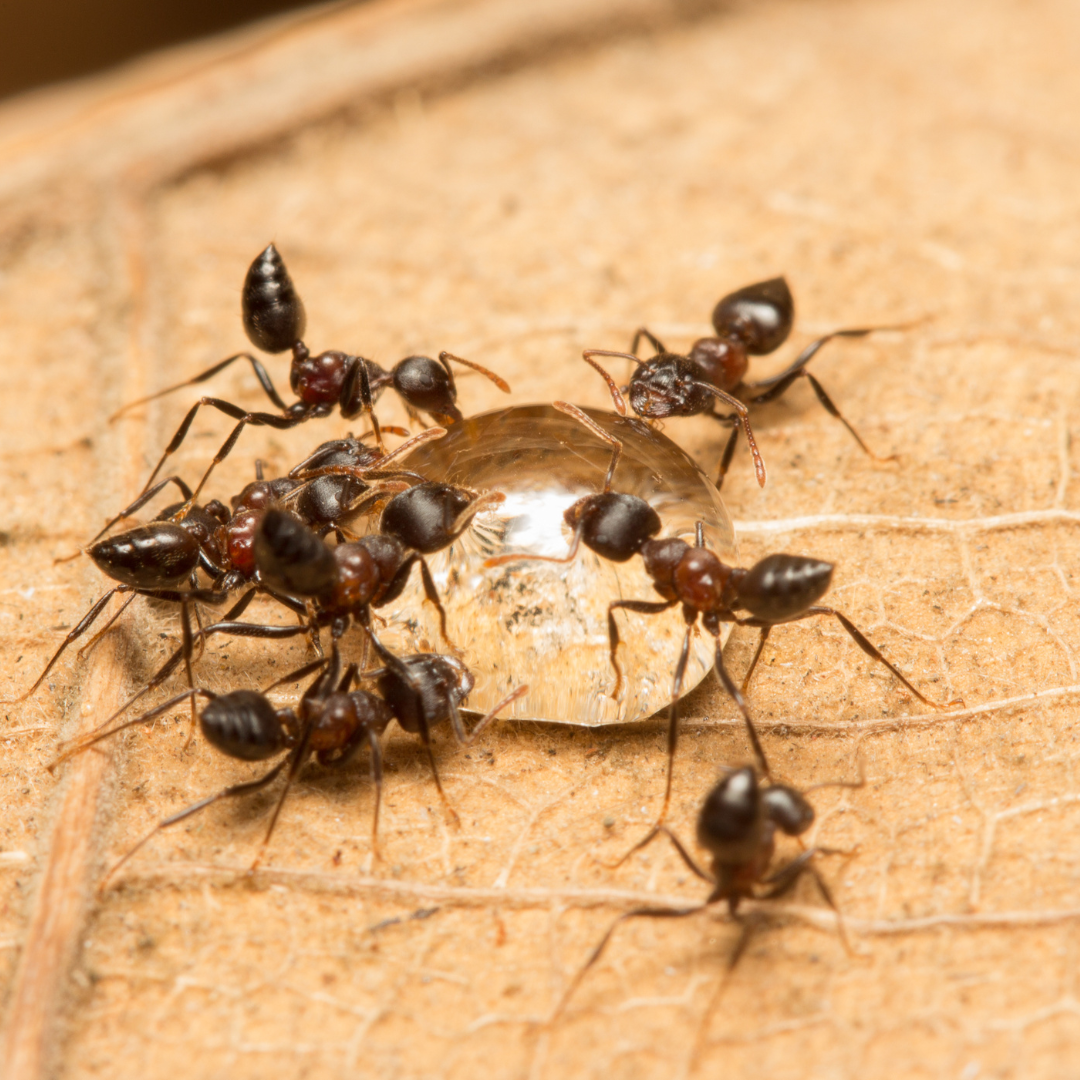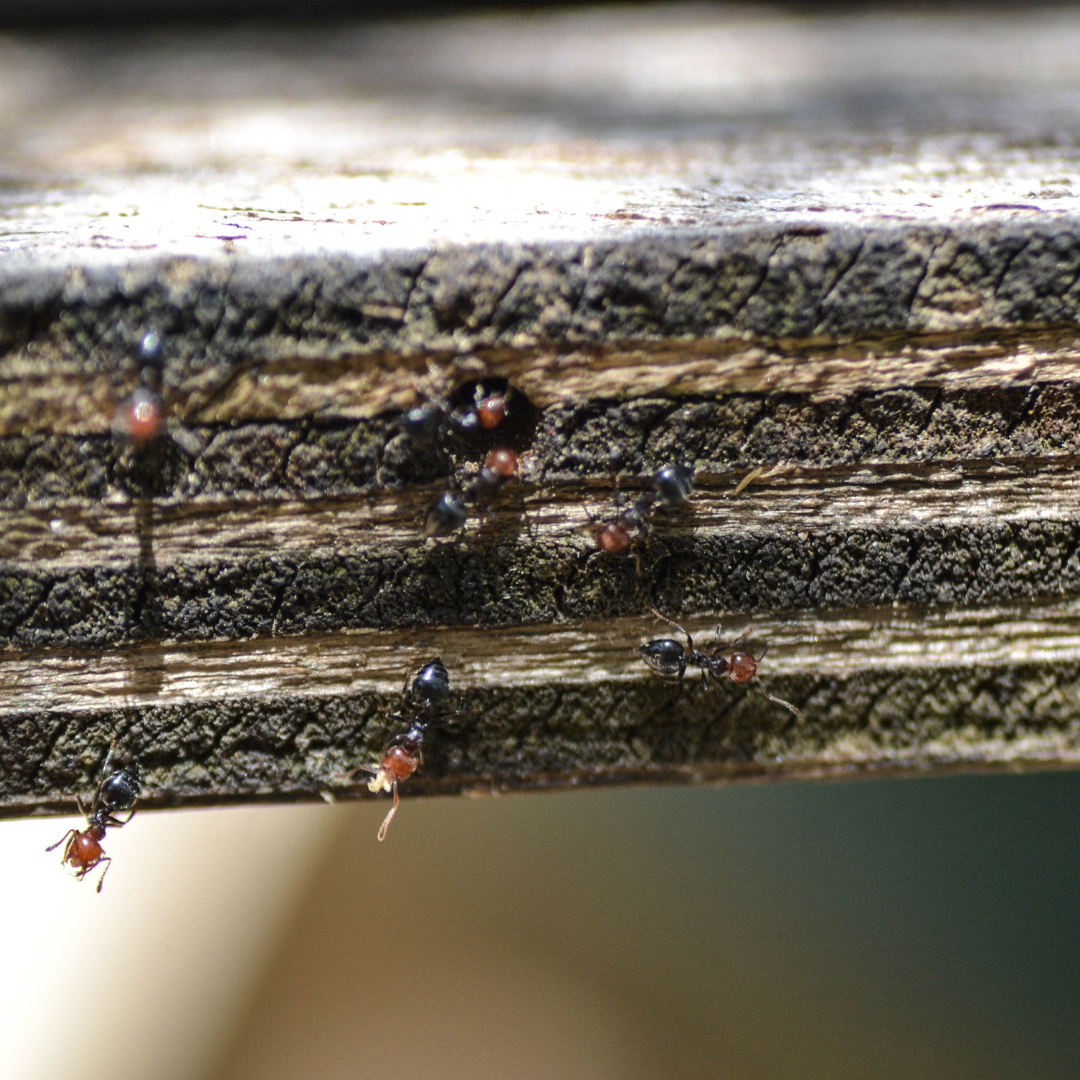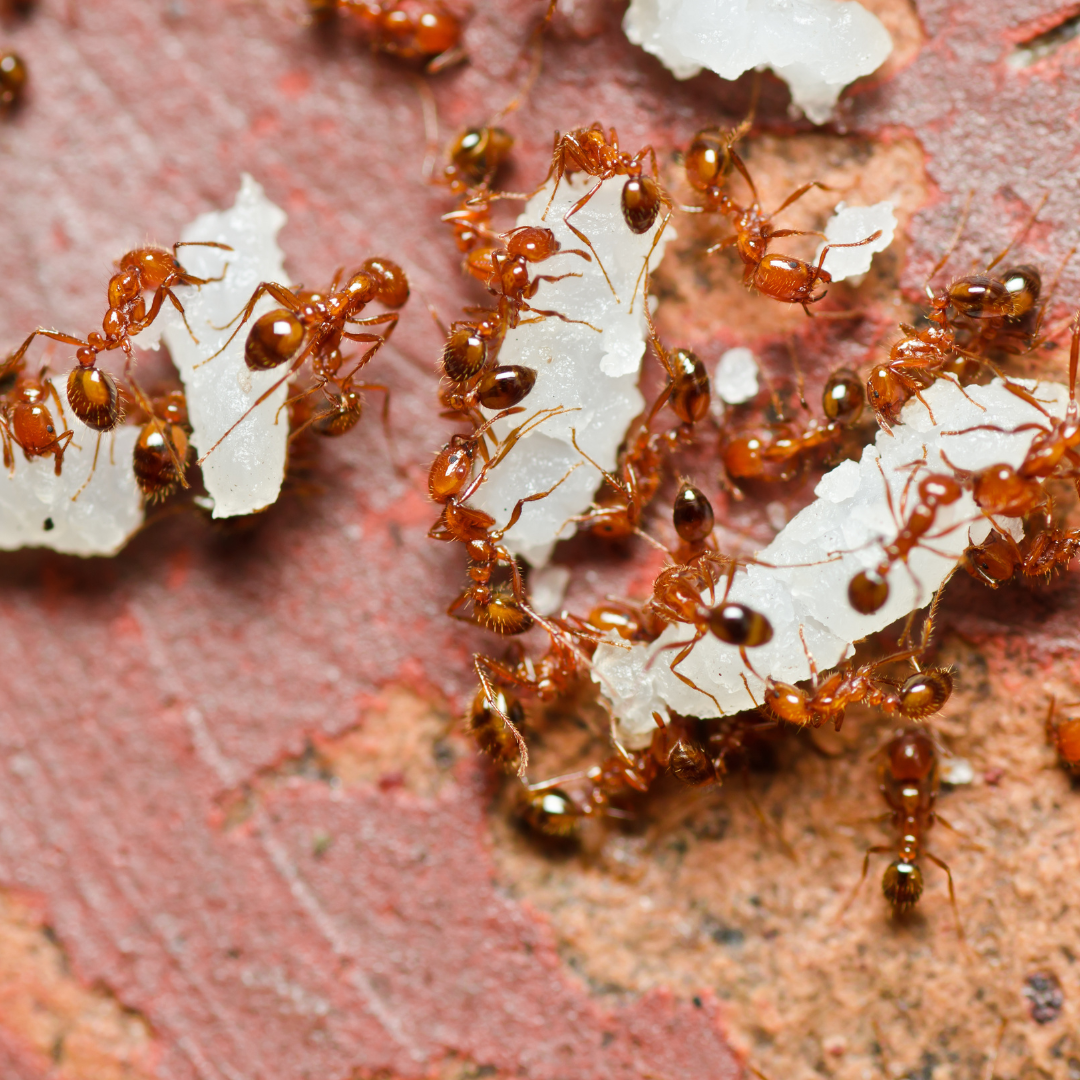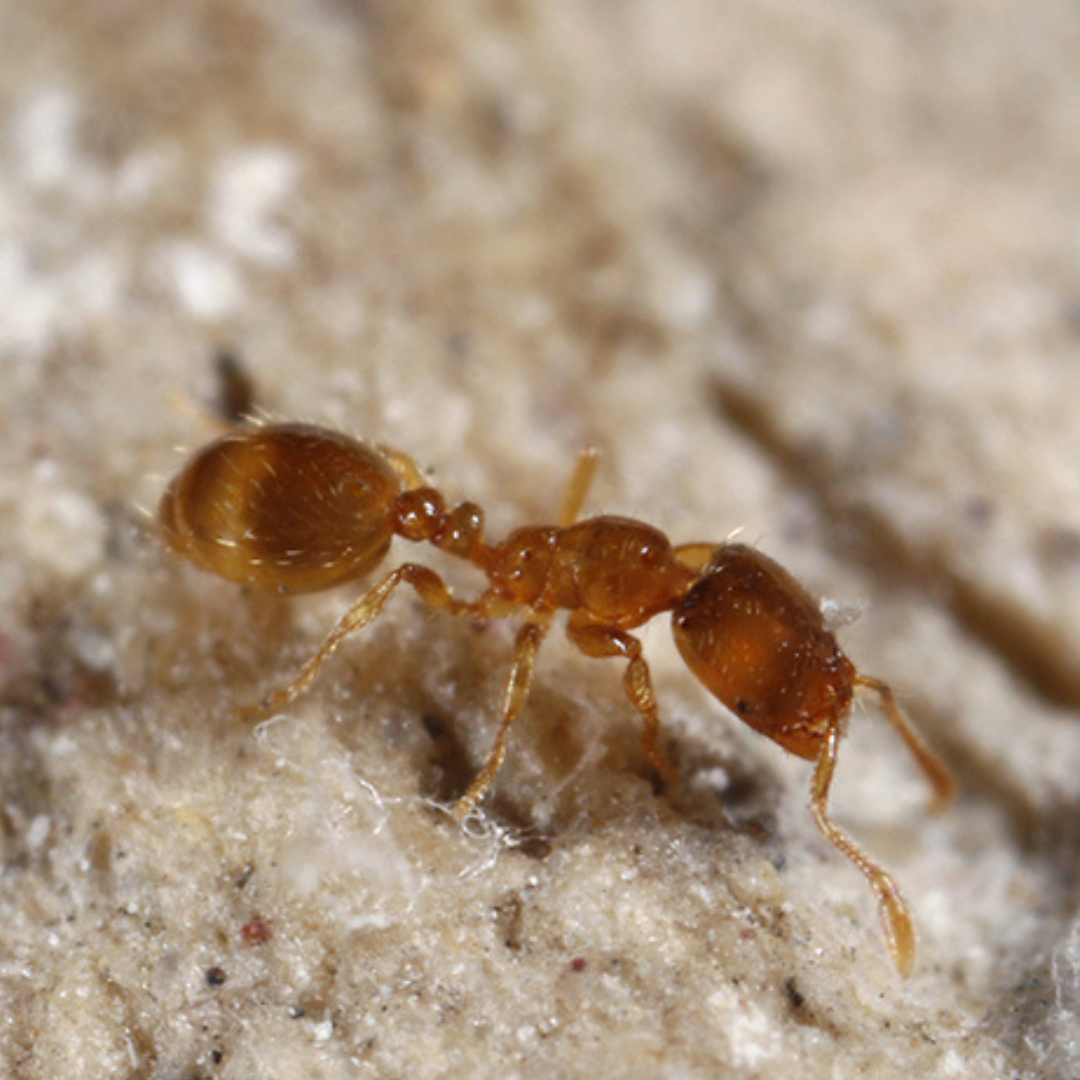Ants are one of the most fascinating insects in Minnesota. From being able to lift 10-50 times their body weight! They also live in colonies of 1,000s to over 100,000 strong. With all of them working together to help grow their colony.
Most Common Ants in Minnesota
(Click on the names to keep from scrolling)
If you have any questions or concerns or would like to schedule an appointment call us or send us an email
Call Us Today! 952-404-BOGO (2646)
Share This Page!
Carpenter Ants

Appearance
Carpenter ants have a few distinctive characteristics that make them stand out. First look at their antennas. Carpenter ants have what is called an elbowed antennae. This means that their antennas break up halfway into a 90-degree angle. Another characteristic is that they are either all black or red and black. When they have wings they get characterized as a male or female ants. These are slightly larger and commonly get misidentified as termites. Termites have much shorter antennas and their bodies are the same thickness from top to bottom. Termites are also smaller measuring 3/8 inches.
Length:
Worker: 0.35-0.5 inches
Male: 0.5-0.75 inches
Female: 0.75-1.0 inches

Behavior
Carpenter ants get their name from being attracted to wood. They are often seen nesting in trees, tree stumps, decks, or in inside homes. Most of the nests located outside are considered parent nests. Parent nests are where the ant colony houses the queen, worker ants, her larva, and pupae. Once the parent nest becomes overgrown some of the worker ants leave the nest to create a satellite nest. These are the nests that are commonly found inside homes or wooden decks. The ants look for areas that have rotted or softwood so it is easier to chew tunnels and galleries through. Inside the tunnels, they store food, pupa, and larva.

Signs of Carpenter Ants
Carpenter ants play an important role in the ecosystem. When they chew through rotted wood they leave a sawdust material called frass. When found outside, this frass acts as a source of nutrients for the soil. The only reason that a carpenter’s ant nest would be inside a tree is if the tree already has started rotting. They do not chew through the living parts of the tree only parts that are already dead and decomposing. A carpenter ant colony will not kill a tree on its own. When frass is found inside the home look for piles of sawdust that are also mixed in with the ant’s diet. This includes pieces of insects, nuts, seeds, etc.
Pavement Ants

Appearance
A few of the easiest ways to identify a pavement ant are; its antennas, spine, color, and size. First, their antennas are clubbed and have 12 segments. They also have a skinny spine with two bumps that connect their abdomen to their thorax. Their colors are either brown or brownish-black. Similar to carpenter ants it is also common to see these ants with wings. The ants with wings are the same size as the workers. They are usually seen in late spring and early summer. They can be seen in the middle of winter if there is a colony of ants inside a temperature-controlled area.
Length:
Worker: 0.3 cm
Queen: 0.6 cm

Behavior
Pavement ants are one of the most common ants to find inside homes in Minnesota. If there is a colony or nest inside a home they are capable of being active all year long and can be seen foraging for food in the middle of winter. Their diet consists of dog food, sweets, oil/grease, meats, seeds, and insects. Some places that they will build nests inside the home are under a home’s cement slab, heated floors, foundations, and kitchens. Outside most of their nests are located under driveways, sidewalks, patios, etc. The foraging ants that are visible outside the nest only make up 10% of the entire colony. The rest of the ants including the queen stay underground.

Signs of Pavement Ants
Spotting pavement ant activity usually starts with spotting sand. Sand mounds are most commonly spotted on the outside, but can be seen inside homes usually on cement slabs or around the foundation. These ants are also commonly seen moving in long single-file lines. These are called “trails and usually lead to a source of food and sometimes an entry point into the home.
Acrobat Ants

Appearance
Acrobat ants get their name from lifting their heart-shaped abdomens above their heads. They commonly do this when feeling threatened. These ants also have elbowed antennas similar to carpenter ants but their antennas are yellowish-orange instead of black. Their bodies are either yellow or brownish-black. These can also be found with wings during the mating season between July and September.
Length:
Worker: 0.3 cm

Behavior
Acrobat ants prefer to make nests inside water-damaged or rotted wood. They make nests inside dead tree limbs, stumps, firewood, and hollowed-out tree cavities. When these ants are inside homes or buildings their nests are located in wall voids, baseboards, or door and window frames that are water damaged. Most of the nesting areas they pick were previously occupied by other insects such as carpenter ants or termites. Acrobat ants do not cause structural damage. Instead, they use previously built tunnels and galleries to use as a nesting sight.

Signs of Acrobat Ants
These ants can be spotted crawling across utility lines, pipes, or tree branches that either touch the home or lead inside the home. Just like pavement ants, they crawl in single-file lines or ant trails. Acrobat ants will forage 100 feet away from the nest for food and other resources.
Pharaoh Ants

Appearance
These ants can be light yellow or red and have darker-colored thoraxes that look black or dark brown. Their antennas are clubbed like the pavement ant. The antennas are also made up of 12 segments. Another unique characteristic of this ant is that they are extremely small. They are half the size of a pavement ant. This makes it difficult to spot any other unique characteristics without using a magnifying glass.
Length:
Worker: 0.16 cm

Behavior
Pharaoh ants do not have swarmers to make new colonies. Instead to make new colonies these ants perform budding. Budding happens once a nest has reached its full capacity or is in danger. A group of worker ants and sometimes another queen will bring some of their larva and pupae to a new nest location. These ants have a unique diet compared to the rest of the ants in Minnesota. This includes eating things like toothpaste, soap, and even shoe polish! Although this is not what their entire diet is made up of. They also eat dead insects, fruit juices, corn syrup, and grease.

Signs of Pharaoh Ants
These ants have been known for making nests in the most random places. Especially when it comes to building nests inside buildings or homes. They can be spotted nesting in sheets, towels, and clothes that haven’t been touched for long periods. They also make nests inside garbage and underneath different household appliances. They are commonly spotted on their feeding trails which usually are along electrical wires and hot water pipes. This is how they navigate through walls and between floors once they are inside.
Field Ants

Appearance
Field ants can vary in color from all black, brown, red, and a mixture of all of these colors. Other characteristics include their uneven thoraxes and having just one node. The node is what connects the abdomen to the thorax. These ants also have 2 different size worker ants. There are major and minor workers in each nest.
Length:
Worker: 0.3-0.6 cm

Behavior
These ants are rarely found inside buildings and homes. They make all their nests outside underground. Their diet consists of primarily honeydew but also insects and sometimes household sweets. They get honeydew from eating insects called mealybugs and aphids. Field ants will climb trees in search of aphids to eat and bring back to their nest.

Signs of Field Ants
Field ants are seen as a nuisance because they build large ant mounds in people’s lawns. Sometimes the mounds can measure over 10 inches across. Not all the nests are visible though. Some of the nests are under trees, rocks, logs, firewood, and patio blocks. These ants do not build nests inside homes or buildings. Although they can occasionally be seen foraging inside.
Odorous House Ants

Appearance
These ants are smaller compared to most other ants found inside. They can either be brown or dark brown. One unique characteristic about them is how they get their name. When they are crushed they give off an unpleasant smell. The smell is described as smelling like rotting coconut or blue cheese.
Length:
Worker: 0.25 cm

Behavior
Odorous house ants have a similar diet to the rest of the ants of Minnesota. Although they prefer to forage for sweet foods. They also feed on insects and other meats or grease. When these ants make their way inside they crawl in single-file lines. Because of their small size, they are capable of getting into tightly packed foods inside pantries and cabinets.

Signs of Odorous House Ants
These ants when outside nest under rocks, wooden boards, mulch, or really underneath any random object sitting outside. These ants will mate and make new colonies by swarming. The winged odorous ants start swarming in May through July. When there is a colony inside a home the ants nest in places that have a source of moisture. Inside wall voids, under floors, and under home appliances.
Thief Ants

Appearance
These ants are the smallest size ants found in Minnesota and are commonly referred to as grease ants. Their colors are yellow to light brown. Their colors are similar to pharaoh ants. Because they are so small, more specific characteristics can be hard to identify. These include the 2 bumps or nodes on their spine, their 10-segmented club antennae and they have no spine on their thorax.
Length:
Worker: 0.13 cm

Behavior
Thief ants get their name from nesting close to other ant colonies and nests. They are often spotted invading other ant nests and taking eggs, larvae, and other food. Similar to most ants thief ants perform nuptial flight to reproduce. Male thief ants are slightly larger than worker ants but smaller than queen ants. But both male and female ants have wings. Swarms of these ants are usually seen between July and September.

Signs or Thief Ants
Because of their small size infestations can be hard to spot right away. They have been noted to build nests inside basements, under baseboards, or in the foundation. Outside their nests are all underground. The entrance above ground is usually a good distance away from the nest itself. They look for areas in open fields such as lawns, golf courses, agricultural fields, etc. Most of the foraging ants can be seen outside the nest when temperatures are at their warmest.
BOGO Provides Ant Services For the Twin Cities and Beyond!
Anoka|Apple Valley| Bloomington|Burnsville|Champlin|Chanhassen|Coon Rapids|Cottage Grove|Deephaven| Delano|Eagan|Eden Prairie|Edina|Elk River|Excelsior|Golden Valley|Independence|Inver Grove Heights| Lino Lakes|Long Lake|Maple Grove|Maple Plain|Maplewood|Medina|Minneapolis| Minnetonka|Minnetrista|Mound|New Brighton|New Hope|North Oaks|Orono|Prior Lake|Plymouth|Ramsey|Rogers|Roseville|Shoreview| Shorewood|Stillwater|St. Louis Park|St. Paul|Victoria|Waconia|Wayzata|White Bear Lake|Woodbury|
If you have any questions or concerns or would like to schedule an appointment call us or send us an email
Call Us Today! 952-404-BOGO (2646)





